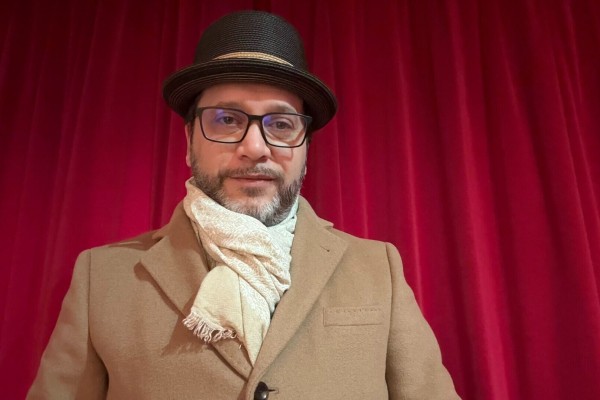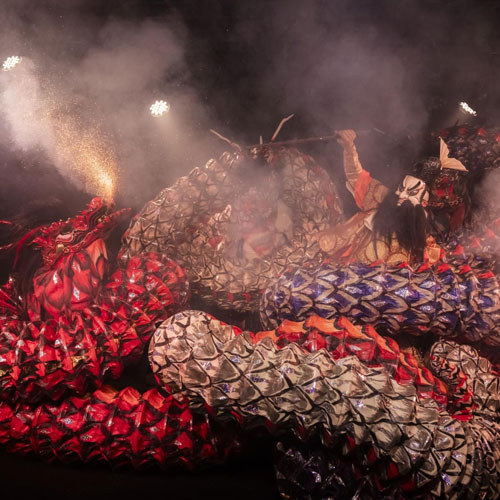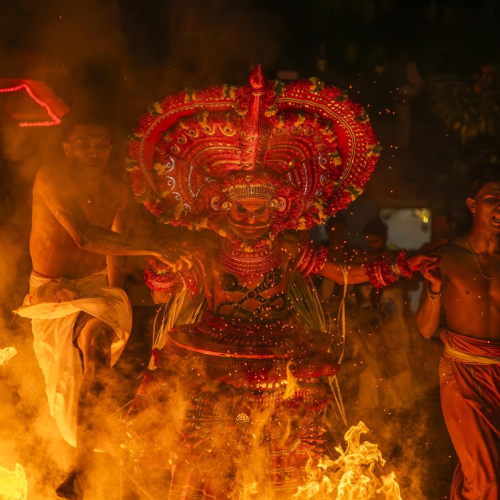
Lucas Dragone
1. Congratulations on winning in the London Photography Awards! Can you share a little about yourself, what inspired you to pursue photography, and how has your journey evolved since your first shot?
I’m Lucas Dragone. I was born in the wings of theatres and raised among shadows and spotlights. Photography, for me, is not just capturing light, but translating silence into poetry. What began as a way to preserve fleeting moments has become a ritual of presence.
2. Can you share the story or inspiration behind your award-winning piece? How does winning this award make you feel about your journey in photography?
This series is part of a long-term project titled Documenting Performing Arts. More than a search for the exotic, it is a humble contribution to the preservation of a vanishing diversity, a way to bear witness to the sacred fragility of human expression before it fades into silence.
Winning this award casts light not on me, but on the artists and the ancestral way of making theatre, a tradition shaped by time, ritual, and silence. It matters deeply, not for prestige, but because the next generation deserves to inherit the echoes of the past.
3. How do you decide which photo to submit for a competition?
Beauty is only the doorway; it draws the eye, but it is the story that touches the soul. Without meaning, beauty fades. Art must speak, carry a message, and leave behind a trace deeper than appearance, a story that lingers, that questions, that connects.
4. What first made you pick up a camera?
The camera, like photography itself, is merely a tool; it could have been a pen or a brush. What truly matters is not the medium, but the story one chooses to tell and the message one dares to offer the world. I chose the camera because its rhythm aligns with mine, it allows me to speak in silence, to write with light.
5. What’s your favorite type of photography, and why do you love it?
I’m drawn to documentary photography because it does more than capture an image; it tells a story, reveals a truth, and offers a vision of the world as it is. Each frame becomes a fragment of our shared reality, a testimony of time, a mirror of humanity. It’s not just photography; it’s a way of bearing witness.
6. What’s your go-to camera setup, and why does it work best for your projects? What’s your favorite feature?
The Leica M, fully manual with a fixed 35mm lens, offers me a paradox I cherish, limitation as liberation. Its constraints don’t confine creativity; they give it shape, like a poem bound by meter. In its discipline, I find clarity, a frame through which intuition can speak.
7. If someone looked at your work, what’s the one thing you’d want them to feel?
I hope they come away having learned something not just about art, but about humanity. I want them to discover a hidden corner of the human story they hadn’t seen before. Through theatre, through the breath of live performance, we don’t just entertain, we reveal. We hold up a mirror where society can glimpse itself, and in that reflection, perhaps understand a little more of what it means to be human.
8. What was the most challenging part of capturing your winning shot?
For me, photography begins with honesty, with a genuine connection to the people and the art forms I seek to capture. Especially in places like Asia and Japan, trust is everything. You don’t simply arrive and take a photo; you must earn your place, show that you understand, that you care.
Only then will they open the door to their world. The photograph itself is just the visible trace. The true work lies in knowledge, in respect, in the silent dialogue that builds trust frame by frame, heart to heart.
9. Is there a specific place or subject that inspires you the most?
Asia, in its vast cultural depth, embraces performing arts not merely as entertainment, but as a lifelong discipline, a path of devotion. These practices are governed by rules, rituals, and a reverence that takes decades to embody.
In many Asian traditions, theatre is not separate from life; it is woven into the rhythm of the everyday, echoing the sacred. It becomes a living ceremony where performance, spirituality, and identity meet in a single breath.
10. Who or what has been your biggest influence in photography?
In photography, John Stanmeyer has long been a guiding light, his way of seeing life and society resonates deeply with me. But long before I ever held a camera, I was moved by the great masters of painting. I was never a painter, but artists like Rembrandt and Caravaggio shaped my eye. Their mastery of light and shadow, their ability to reveal the soul within a face, taught me that every image can be a window into something eternal. Their influence still echoes in every photograph I take.
11. What message would you share to inspire photographers to participate in photography awards, and what advice would you give to help them excel in the competition?
Photo awards are a way to share your voice with the world, to let your work be seen, and therefore, truly exist. A photograph that remains unseen is a story left untold, a dialogue left unfinished. But visibility alone is not enough. Be honest. Have something to say. Let beauty be the invitation, not the message. What endures is not the surface, but the truth you dare to reveal through the image.
12. What’s one piece of advice for someone just starting in photography?
Be honest with yourself. Speak from a place of truth, and have something meaningful to offer the world. Don’t chase exoticism, stories aren’t found in distant lands alone; they live around the corner, within the ordinary, within you. Talk about what you know, what you’ve lived, what moves you. Everyone carries a story worth telling, the art lies in listening to it and daring to share it.
13. What role do editing and post-processing play in your creative workflow?
In documentary photography, editing is part of the craft; adjusting contrast, light, or tone can help reveal the essence of a moment. But to alter the image is to betray it. The power of this art lies in its honesty. You can refine the truth, but you must not reshape it. The photograph must remain a witness, not a fiction.
14. How do you see technology, like AI, influencing the future of photography and your own approach?
I believe AI is a powerful tool, one that opens new pathways for creation and imagination. But it remains just that: a tool. In documentary photography, authenticity is sacred. It’s about presence, trust, and truth, qualities AI cannot replicate.
Yet in the realm of fine art, where the boundaries of reality are meant to blur, AI becomes a fascinating ally. It can extend the artist’s vision, but it should never replace the artist’s soul.
15. If you could photograph anything or anyone in the world, what would it be?
It is human nature that endlessly fascinates me, our rituals, our contradictions, our need to express the invisible. I wish to continue documenting humanity through the lens of theatrical traditions, where art becomes a mirror of the soul.
One form I have yet to explore is Japanese Kabuki, a world of stylised beauty and ancestral rhythm. It remains on my path, waiting to be encountered, like a chapter not yet written in the story of human expression.



